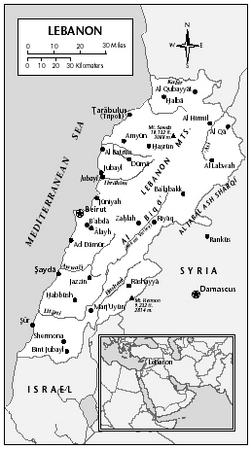Lebanon - Religions
Religious communities in the Ottoman Empire were largely autonomous in matters of personal status law and were at times treated as corporations for tax and public security matters. Membership in a millet, as these groups were called in Ottoman law, gave the individual citizenship, and this position, although somewhat modified, has given Lebanese politics its confessional nature. Religion is closely connected with civic affairs, and the size and competing influence of the various religious groups are matters of overriding political importance. The imbalance of power between Christians and Muslims, aggravated by the presence of large numbers of Palestinians, was a major factor contributing to the bitter civil war in 1975–76.
As of 2002, it has been estimated that about 70% of the population practice Islam (5 legally recognized groups—Alawite or Nusayri, Druze, Isma'ilite, Shi'a, and Sunni). Christians made up 23% of the population (11 legally recognized groups—4 Orthodox Christian, 6 Catholic, and 1 Protestant). The Maronites are the largest Christian group with Greek Orthodox being the second largest. There was also a small number practicing Judaism. Muslims have come to outnumber Christians as the result of long-term demographic trends and population displacements during and after the civil war. The main branches of Islam are Shi'a and Sunni.
Under an unwritten agreement made at the time of the National Covenant of 1943, the president of Lebanon must be a Maronite Christian, the prime minister a Sunni Muslim, and the speaker of parliament a Shi'a Muslim, with a ratio of six Christians to every five Muslims in the legislature. But this

arrangement has subsequently ceased to reflect the strength of competing religious groups in the population and is widely criticized. The climate of religious freedom in the country has attracted a great deal of immigrants from neighboring countries who are themselves facing religious discrimination. Both Christian and Muslim holidays are officially observed.
Comment about this article, ask questions, or add new information about this topic: